Ficus Benjamin transplant at home: timing, technology, care tips
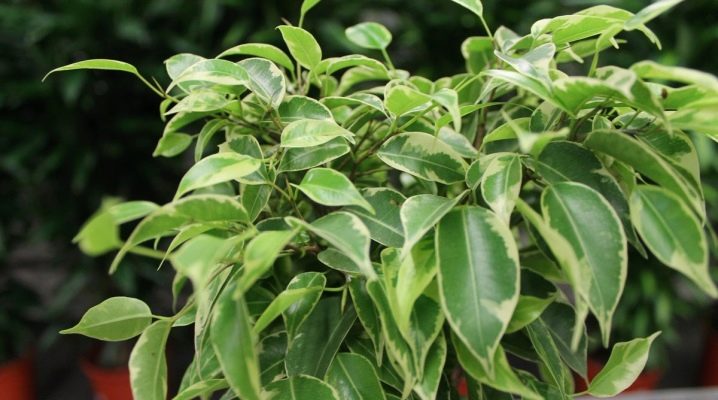
Home ficuses - evergreen beauties and symbols of comfort - have been living in people's homes since ancient times. They decorate the interior, have a beneficial effect on the aura, relieve tension and purify the air. One of the many species of this plant is the ficus Benjamin (Ficus Benjamina is named after the English botanist Benjamin Jackson, who discovered this species). Ficus is one of the favorite favorites of admirers of indoor flora.
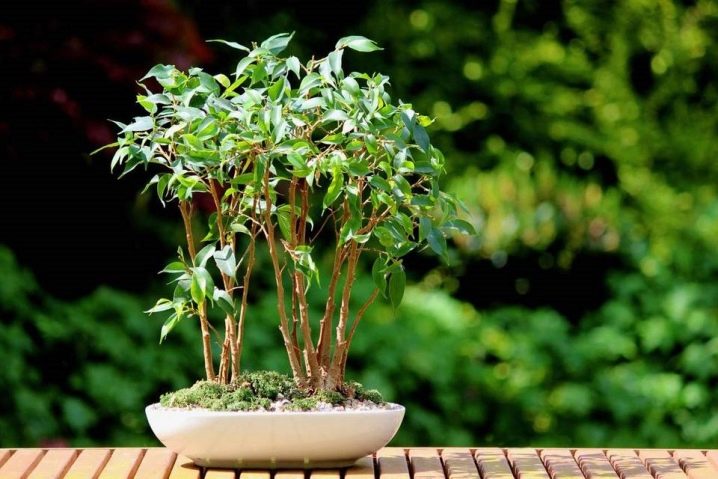
Peculiarities
Knowledgeable florists are sure: in order to become a "magician" even a little, you need to plant Benjamin's ficus at home.
With a great desire, certain skills and patience, you can create an unsurpassed masterpiece from this plant, with leaves surprisingly beautiful in color, intricately intertwined stems and an effectively formed crown of the original configuration.
Ficus Benjamin has many varieties that differ in decorative characteristics, growth rates and growing conditions. Here are some popular varieties of Benjamin's ficus: Natasha, Nicole, Kinky, Starlight, Naomi, Anastasia, Daniel, Exotic - and this is not a complete list of known varieties.
Ficuses belong to a group of plants that are easy to care for. However, it should be remembered that its external decorative properties, successful growth and healthy appearance completely depend on high-quality competent care even for the most unassuming plant.
A characteristic feature of Benjamin's ficus is that he does not like to change his place of residence in the apartment. Try to initially choose a permanent place for it, where there are no drafts and direct sunlight, away from heating radiators, in order to exclude as much as possible the movement of the flowerpot around the apartment from one place to another.
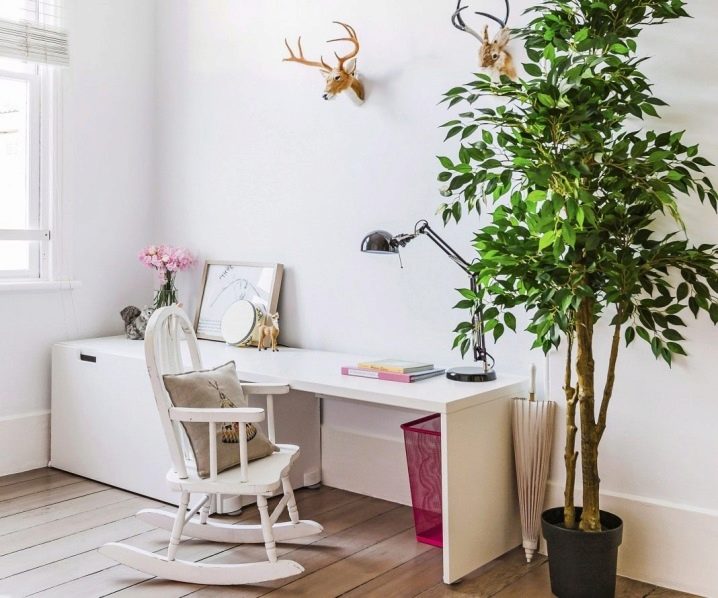
When to transplant?
The best time to transplant ficus Benjamin is the period of active increase in the metabolism in the plant, which occurs in spring and early summer. This is the best time to recover from stress.
It is not recommended to transplant ficus either in the fall, or in November, or in December, or in other cold months.
The transplantation procedure, as one of the main components of care, must be taken with full responsibility from the moment the seedling is purchased in the retail network. For him, this is already a change of "place of residence", and as a reaction to new conditions, "leaf fall" may begin, which will stop after adaptation.
The frequency of transplanting directly depends on the age of the plant.
- It is not necessary to transplant a newly acquired ficus seedling into the nutrient soil immediately, having come from a specialized store, but after 2-3 weeks, in order to enable the plant to calmly adapt to new conditions.
- Young plants up to 6-7 years of age should be replanted every year. Only in this way can you get the annual transformation of the plant, and its decorative properties will increase from year to year.
- Older plants will need to be transplanted every 2-3 years. Roots emerging from the drainage holes in the bottom of the flowerpot will become a sign of the need for transplantation.
- From about 12 years of age, the plants are no longer transplanted.It should only periodically (once every 2-3 years) replace the depleted soil in the upper layers of the soil in the flowerpot with a new one, enriched with nutrients (to a depth of about 10 cm). The roots should be handled carefully so as not to accidentally damage them by straightening them.
Before you finally decide on the timing of the transplant, you should observe the plant for some time. If the roots begin to sprout above the soil or pass through holes in the bottom, it is time to replant the plant.
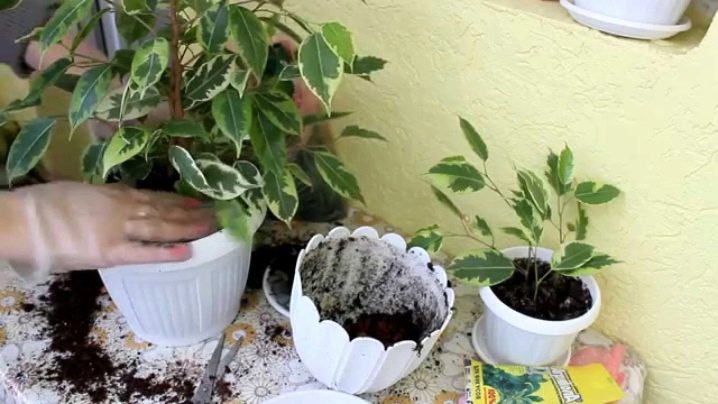
How to transplant?
Periodic transplanting into another pot with a renewed soil mixture is an essential element of care, so you should thoroughly prepare for it.
Preparatory stage
First you need to prepare the soil mixture. It can be purchased in a specialized shopping center (sold specifically for ficuses of the corresponding composition), it is easy to prepare it yourself. Three main elements are considered optimal in the composition of the substrate for a young ficus: sod land (40%), leafy soil (40%), coarse river sand (20%). For adult ficuses, the composition of the nutrient mixture is best prepared from equal parts of turf, humus, leafy soil, coniferous mixture, peat.
After mixing the components, the soil is treated with potassium permanganate (weak pink solution) or hot water to neutralize pathogenic microflora in order to provide optimal conditions for the fastest recovery and prevent possible diseases.
Soil acidity indicator pH should be constant within 5.5-6.5 with each transplant, since a deviation in one direction or another negatively affects the absorption of nutrients and microelements, which leads to a decrease in the decorative properties of the ficus.
The crucial moment is choosing a new pot. It should be 2-3 cm larger than the previous one in diameter, in height, with drainage holes in the bottom. You should not choose a pot larger than the recommended size - the roots should be comfortable in optimal tightness, sufficient for adequate nutrition and metabolic processes of the whole plant.

It is preferable to choose massive ceramic or clay pots - if someone accidentally touches such a pot, the ficus will never tip over. In addition, their walls are more hygroscopic than plastic ones. Before planting, about a day before it, a new pot must be treated with a 3% formalin solution for disinfection.
For a successful and convenient transplant, you need to prepare the necessary tools in advance - gloves, pruning shears or garden shears for trimming roots and dry leaves, a small spatula and a thin stick for mixing the components of the soil mixture.
1-2 days before the intended transplant, it is necessary to actively loosen the topsoil and water the plant abundantly in order to freely remove the ficus from the old flowerpot.
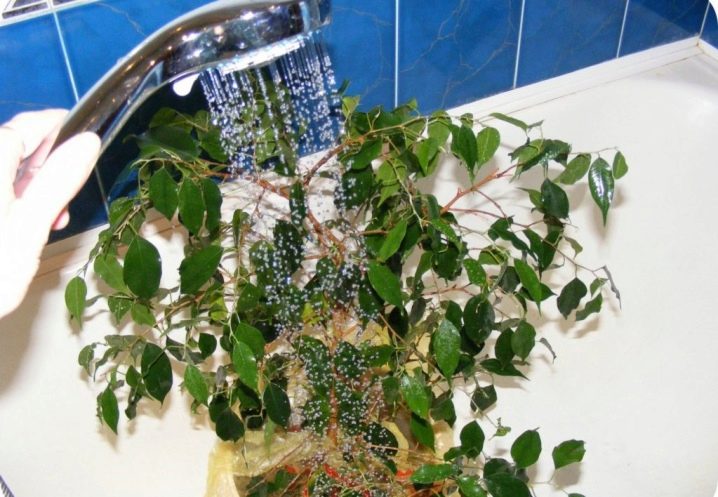
Procedure technology
Before starting work on transplanting a ficus, you should carefully study the rules for this responsible procedure and follow it step by step, following all the recommendations as much as possible. It is advisable to cover the floor in the room before work with paper, cellophane or old oilcloth in order to easily remove the inevitable mess at the end of the work.
- To ensure air exchange of the soil and the drain of excess water, drainage should be laid in the pan on the bottom of the pot (fine crushed stone, gravel, pebbles are suitable) by about 15-20% of the volume, lay river sand, then pour a little earthen substrate.
- Slowly remove the tree from the moistened soil of the old pot, carefully shake the roots from the ground and carefully examine. Rotten areas should be trimmed and treated with fungicides.
- Place the tree in the selected pot strictly in the center, avoiding planting too low (make sure that the indent of the root collar from the upper edge of the pot is 2 - 3 cm).
- Gradually fill the space near the trunk with the soil mixture, preventing the formation of voids, slightly compacting the soil with your hands, trying to ensure that the tree sits stably.
- Abundant watering is not needed, light moistening with a small amount of water is enough.
So you can transplant the newly acquired seedlings and young ficuses of the first years of life.
Older plants are most often transplanted using the transshipment method. At the same time, it will be difficult for one person to cope with such work. Ask someone close to you to help you so that one person can support the flowerpot, and the other can extract a rather large plant from it. With this method, a minimum of soil is shaken off the root system, the plant is transferred to a new flowerpot along with a small old clod, the voids around are filled with new nutritious soil.

Follow-up care
After completing the transplant procedure, you should not relax. Try to give the plant as much attention as possible to help it cope with stress. Competent care will allow the ficus to successfully adapt. After holding it somewhere in a secluded shaded corner for about two or three days, return it to its place in the house, where it has always been, receiving the usual amount of light.
Some florists recommend covering the plant with a transparent polyethylene hood and aerating twice daily.
The greenhouse effect will help the plant recover faster. When the ficus grows a little stronger, the bag can be removed.
The first watering is 2-3 days after the transplant procedure. After 25-30 minutes, excess moisture from the pallet must be drained, otherwise the roots will begin to rot. If the soil has not yet dried up, then you can wait a day or two with watering. In the summer, you need to spray the tree 2 times a week with boiled or settled water.
Do not rush with any feeding - this can be done no earlier than in a month.
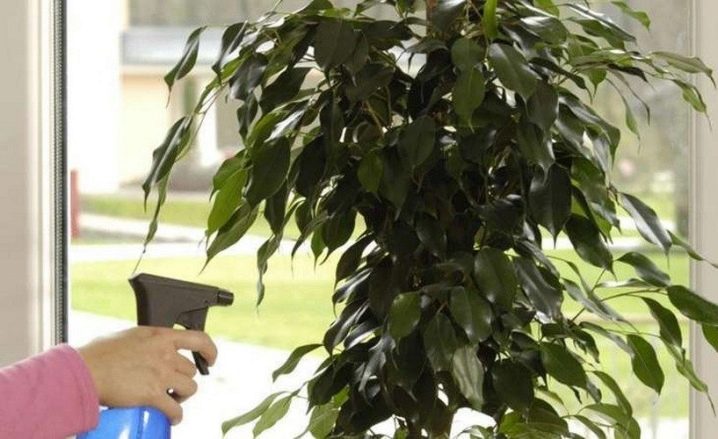
Possible problems
If you notice that after transplanting your pet has become lethargic, has stopped growing and is slowly dropping leaves, do not worry. This is the natural state of a living organism after an intervention. Continue to observe the plant, properly care for it, monitor the conditions of detention. In about a month, under favorable conditions, Benjamin's ficus will fully recover, grow again and, as before, will delight you with renewed beauty.
Florist tips
Experienced florists recommend never to forget about a few simple, but important points in the agricultural technique of Benjamin's ficus:
- compliance with the timing of the transplant;
- permanent habitat;
- sufficient illumination;
- optimal temperature conditions;
- moderate watering (without excess or lack of moisture);
- a sufficient amount of food and oxygen;
- timely detection and elimination of pests.
Successfully growing a beautiful luxurious ficus tree is not such a big deal. When planning to settle Benjamin's ficus at home, do not forget the fact that it grows quickly, and over time it will need much more space than in the beginning.
With the most accurate implementation of all the recommendations of specialists on the conditions of detention and the rules of care, for many years you will be happy to contemplate this amazing plant, which will become a favorite of all members of your family.
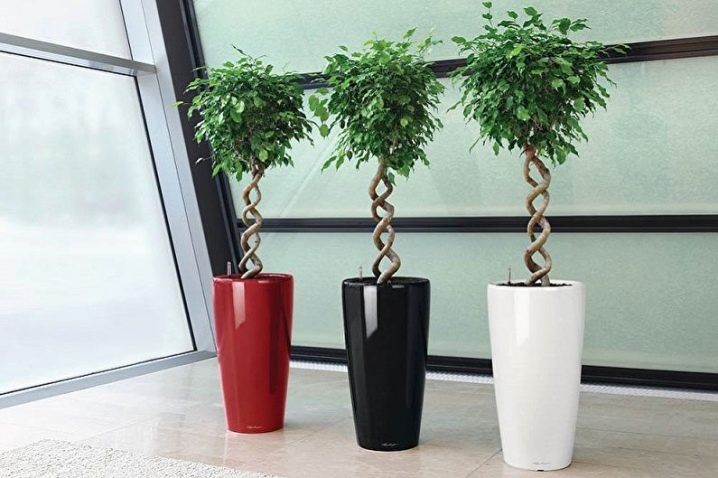































The comment was sent successfully.